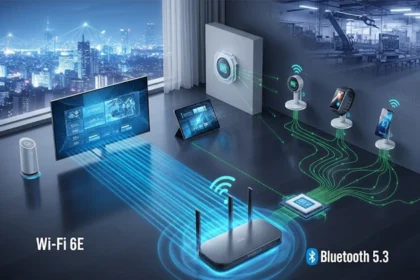With the Digital Revolution, all businesses, organizations, and even governments rely on computerized systems to handle their day-to-day operations. Cybersecurity is thus a primary objective of shielding data from different online threats or other unauthorized access. As reports of data breaches, malware, and hacks become the standard, continuous technological advances often suggest a parallel shift in cybersecurity patterns. In this article, we will discuss the top cybersecurity trends in 2021.
Here are the Top Cybersecurity Trends in 2021
- Rise of Automotive Hacking
Today, cars come packed with automated software that creates smooth communication for cruise control drivers, airbags, and advanced driver assistance systems. Bluetooth and WiFi systems are in utilization by these vehicles to connect, revealing them to many risks or hacker bugs. The benefits of vehicle control are expected to increase with the further use of autonomous vehicles. An even more complex mechanism is used for self-driving or autonomous vehicles, requiring strict cybersecurity measures.
- Potential of Artificial Intelligence (AI)
As AI is launched in all business segments, this technology has brought tremendous cybersecurity improvements with a combination of machine learning. AI has been crucial in developing automated protection systems, processing natural language, face recognition, and automatic threat detection. It can also build smart malware and attacks to circumvent the new data control security protocols. Threat detection systems authorized by AI will anticipate new attacks and warn administrators instantly of any data breach.
- Mobile is the New Target
Trends in cybersecurity provide a significant increase in 2019 for mobile banking attacks. Thus it makes our handheld devices a potential prospect for hackers. In all our photos, financial transactions, emails, and texts, more threats to individuals are present. Smartphone viruses or malware will capture the attention of cybersecurity trends in 2021.
- Cloud is also Vulnerable
With more cloud-based organizations now in operation, security protocols need continuous monitoring to protect data from leaks. Cloud apps like Google or Microsoft are still well equipped with protection from their end. The user end acts as a major source of mistakes, malware, and phishing attacks.
- Data Breaches are the Main Target
For organizations worldwide, data will continue to be a leading concern. Securing digital data is now the primary target, whether it is for a person or business. For hackers to access personal information, any minor browser or computer error or flaw in your system is a potential weakness.
- IoT with 5G Network: The New Frontier of Technology and Risks
With 5G networks set to launch internationally in 2020, IoT will become a reality in a new age of inter-connectivity. This interaction between several devices also exposes them to bugs, risks, or an unknown software error having an external effect. Even the most used Google Chrome-supported browser in the world has been found to have major flaws. The 5G architecture is still efficiently new and needs a great deal of testing to find vulnerabilities and protect the system from external attacks. Any step of the 5G network could bring several network attacks that we might not be aware of. Manufacturers need to be very strict when designing sophisticated 5G hardware and software to track data breaches.
- Integration and Automation
With the amount of information multiplying every day, automation’s introduction to provide more sophisticated data control is crucial. The new demand for hectic work pushes professionals to provide fast solutions, making automation more useful than ever before. During the agile process, security metrics are in implementation to create more reliable applications in every aspect. It is also challenging to safeguard vast web applications, making automation, and cybersecurity a critical concept in the software development process.
- Targeted Ransomware
Another important factor in cybersecurity is that it is not possible that targeted ransomware will be ignored by 2020. In particular, developed nations’ sectors rely heavily on specialized software to carry out their daily operations. There is a greater emphasis on specific ransomware targets. Though ransomware usually asks for threats to reveal the victim’s data unless a ransom is still paid. In the case of countries, it may impact the big organization or even.
- State-Sponsored Cyber Warfare
In attempts to find supremacy between the western and eastern powers, there will be no stoppage. Although there are few attacks, often worldwide news is created by the dispute between the US and Iran or Chinese hackers. They have a massive influence on a case like a referendum. With more than 70 elections to be conducted this year during this period, the illegal activity will increase. Expect high-profile breaches of records, political and industrial secrets to top cybersecurity trends in 2021.
- Insider Threats
Indeed a human mistake is one of the critical reasons for the data breach. Any lousy day or intentional backdoor can bring a whole company down with millions of stolen data. To safeguard data in every way possible, make sure you build more visibility inside the premises.
Conclusion
These cybersecurity trends in 2021 jump to have more fear of piling their security measures in organizations. Organizations expect to invest $100+ billion more than ever on securing their assets alone this year. Infrastructure security is playing a crucial role in virtually every organization today. It would be an excellent choice to start their cybersecurity learning curve today to become experts for tomorrow. Educated and experienced cybersecurity professionals are among the highest-paid employees in the IT industry.










